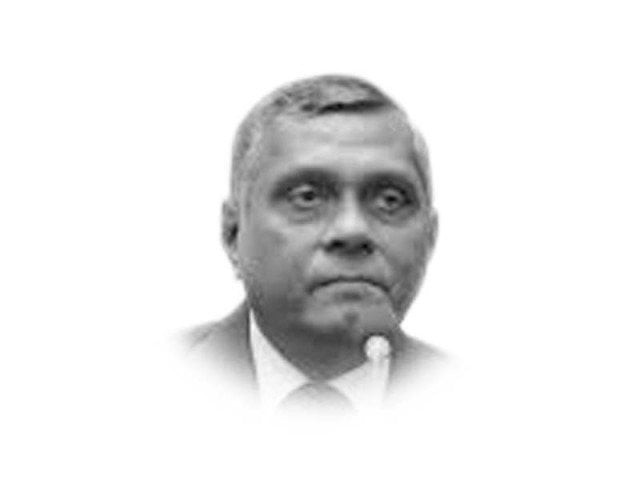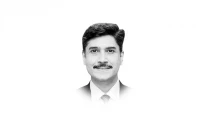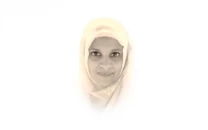Stuck in the dead end post-election
A majority of the people voted against the status quo, but the results were manipulated

For the third time in its political history, Pakistan finds itself stuck in a dead end after a general election. The first time the country came to this pass was after the December 1970 general election. The outcome of the vote triggered a critical crisis as the stakeholders reached a dead end, ultimately resulting in the country breaking up into two. Then again, the results from the March 1977 general election triggered a large-scale agitation against alleged rigging in the polling, leading to the imposition of what turned out to be the country’s longest martial law.
And now the outcome of the February 2024 general election has resulted in a critical impasse. PTI and several other political parties are alleging large-scale rigging and fraud in the compilation of results through what they call doctored forms 45. No single party got a simple majority in the election and the country seems to have hit a dead end despite the PPP’s announcement on February 13 that it will support the PML-N candidate for Prime Minister but will not be a part of the federal cabinet.
A majority of the people voted against the status quo, but the results were manipulated to turn the victory of the PTI-backed independent candidates into a defeat. The protesting candidates and their supporters, particularly in Punjab and Karachi, are now moving the Election Commission and higher courts against alleged rigging. But, one wonders how the PTI candidates will get relief from the same authority, the Election Commission, which they allege are responsible for their woes. In the meantime, high courts in Punjab and Sindh have dismissed the petitions of the PTI-backed candidates and suggested to them to approach the Election Commission to have their pleas heard. It is thus highly likely that the issue of rigging will linger on before election tribunals, as was the case in the 2013 general election when the PTI had alleged rigging in at least 35 National Assembly constituencies.
The situation this time may be different because the PTI-backed candidates claim that they have original forms 45, according to which they have won 180 National Assembly seats, but the Election Commission manipulated final results in forms 47. Still the situation is not too favourable for PTI. It’s because while the petitions will remain pending with the election tribunals, the PML-N, with the PPP and MQM-P backing, will deny PTI the opportunity to form government at the Centre. A single largest bloc in the National Assembly, the PTI-backed candidates may form a strong opposition in the lower house, but only to give rise to political uncertainty which will, in turn, further sink an economy that is already struggling to find its feet. The PPP, by supporting a PML-N government without accepting any ministries, will augment the vulnerability of the Prime Minister. If the PPP manages to get the coveted positions of President, Speaker National Assembly and Chairman Senate, without joining the federal cabinet, it can any time withdraw its support and bring down the PML-N government.
While such a government would already be fragile, the PTI is understood to keep exerting pressure both in the parliament and outside, rendering the government unable to perform. The PPP would then be in a good bargaining position to seek more and more concessions from the PML-N without shouldering any responsibilities.
The emerging situation needs to be analysed from three angles.
First, the legitimacy of the potential PML-N government will be at stake. As per the PTI’s claim that is backed by anecdotal evidences, a majority of the PML-N candidates for national and provincial assemblies lost the elections but were declared victorious through fraudulent result compilation. Not just the PML-N, the credibility of the PPP and MQM-P will remain in question as the PTI, JI, JUI and GDA are up in arms against the victory of these parties, alleging that it is a result of political engineering orchestrated by the election commission at the behest of the powers-that-be. Even if the PML-N manages to form government with the help of the PPP and MQM-P, the ensuing legal battles against the theft of mandate will enhance political chaos and destabilise the government.
Second, if Pakistan has entered a dead end because of alleged large-scale rigging, it is a moment of truth for the undemocratic forces that have long held sway. While the price of a predictable political chaos and economic crisis will be paid by the country, the powers-that-be will not be able to escape responsibility either in case the state defaults on its foreign obligations. Pakistan has to pay back around 50 billion dollars to its lenders in one and half years from now — something that will become more and more difficult in the absence of political stability in the country. There are other economic challenges too like falling economic growth rate, depleting foreign exchange reserves and dwindling exports. Whosoever is in power will have to swallow the bitter pill of economic erosion, crisis in governance, absence of rule of law, environmental threats and growing human security challenges.
Finally, the dead-end situation can only be dealt with by respecting the verdict of the people in general election and focusing on dealing with issues that threaten the very survival of the State of Pakistan.
Unfortunately, the only focus of the stakeholders is on how to maintain power grab without addressing the real issues facing the 250 million people of Pakistan. Amid this lack of realisation on professionally and judiciously managing the prevailing crisis, which has augmented after the 2024 general election, the outcome will be an economic catastrophe in the form of a financial default; hyper-inflation and further falling in the economic growth rate. Lust for power and corruption is unlikely to provide escape from the dead end we have hit.
Published in The Express Tribune, February 20th, 2024.
Like Opinion & Editorial on Facebook, follow @ETOpEd on Twitter to receive all updates on all our daily pieces.


















COMMENTS
Comments are moderated and generally will be posted if they are on-topic and not abusive.
For more information, please see our Comments FAQ